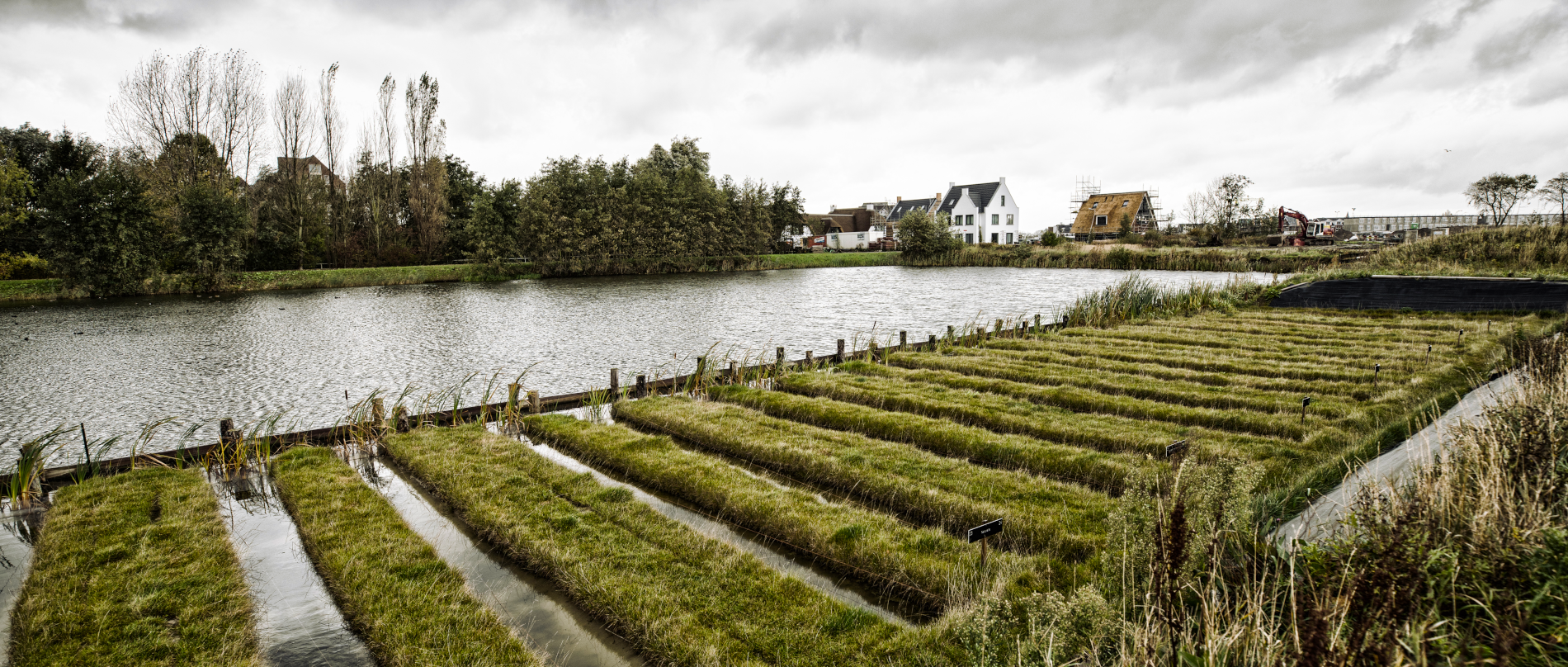Research at the Living Lab
What is the effect of pesticides, fertilizers or plastic on water quality? And how do wind and rain affect the data? These are just some of the things that Leiden environmental scientists study in the 32 ditches of the Living Lab.
Researchers study the consequences of pollution under real-life conditions in the Living Lab. They also look at how to produce food sustainably, and how to keep the soil and water clean. More information on the research projects can be found below.



EcoWizard: Ecological assessment of nanomaterials
What is the effect of nanoparticles in nature? What do they do to organisms and the interaction between species? These are questions to which we don’t yet know the answers. The pioneering research carried out by Professor of Ecotoxicology Martina Vijver aims to combine data from lab and field studies. This data will provide the first information on the long-term effects of nanoparticles (ENM, Engineered Nano Material).
The findings from this project will form the backbone of new ecological models. The models can then be used to make an assessment of the environmental impact of ENMs, which can also be used for other ecosystems.


Red crayfish: perpetrator or victim?
In the Netherlands, the American red crayfish has been linked to all kinds of problems in freshwater systems, such as over-fertilization and destabilization of dikes. However, this has so far not been scientifically proven. Krijn Trimbos wants to change that by determining the composition of living communities in ditches. As part of this study, the researchers take water samples in the ditches with and without crayfish. From these samples, they extract the DNA that the freshwater organisms have left behind – also known as eDNA. The researchers then examine whether the presence of the crayfish causes a change in the ecological communities. This way, they can determine what the effect is of the red crayfish on freshwater systems.


Man and mosquitoes
Sam Boerlijst is trying to discover how human influences such as climate change, land use and water management influence mosquito populations. He uses the experiments he conducts in the Living Lab to construct models that allow researchers to predict whether people in particular areas are more at risk of transmitting diseases through mosquitos. ‘You can then avoid or limit that risk,’ Boerlijst explains.
> Read more about this research


Small plastic particles, big effects on the environment?
Researchers believe that organisms such as dragonflies can ingest small plastic particles. The idea is that they also pass these on in the food chain. PhD candidates Martin van der Plas and Tom Nederstigt are conducting research on this, supervised by Martina Vijver and Krijn Trimbos. They look at how plastic particles move within freshwater ecosystems and whether their structure changes and works differently. They have devised an innovative way of doing this: based on DNA in water samples (eDNA), they map the whole ecological community of the Living Lab, and then analyse species one by one to determine their exposure to plastic particles. The researchers are hoping to gain a better understanding of the impact of plastic pollution on the environment.


Ecological impact at nano scale
Tom Nederstigt researches how nanomaterials based on titanium, which are used widely in such products as sun cream, can have long-term negative consequences on freshwater systems. Research has shown that some of these nanomaterials can eventually end up in surface water.
Nanomaterials are slowly but surely taking the place of traditional chemicals in many products, from colourants in cosmetics to advanced pesticide delivery systems.
As the name suggests, nanomaterials distinguish themselves through their small size, namely between 1 and 100 nanometers. We know that such minute particles behave differently from larger ones, although the full impact of this is not yet understood.
The true-to-nature set-up of the Living Lab makes it possible to conduct differentiated research in this area. This project helps us gain a better understanding of this relatively new group of materials.


Landscapes that can make you ill
Maarten Schrama and the One Health team study how we as humans promote diseases and disease vectors in the ecosystems around us. They apply a combined approach of lab studies, field studies and modelling to better understand infectious diseases. Ultimately, they hope to be able to improve the prediction and prevention of infectious diseases.




